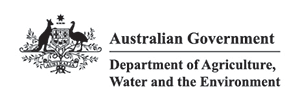Looking at smoke is making things clearer

This project is supported by funding from the Australian Government Department of Agriculture, Water and the Environment as part of its Rural R&D for Profit program.

Ian Porter is cautiously optimistic that months of studying smoke in minute detail is about to bear fruit.
After accompanying authorities to the sites of 27 controlled burns in and around Victorian wine regions he and his research colleagues are getting a clearer picture of the movement and make-up of the smoke they create and the patterns of smoke that impact in vineyards.
‘I can’t say definitely that we are going to end up with a model yet, but we now have the basis of all the steps that you need to get to a model; we’ve measured smoke composition, grape content and wine content and we’ve just got to do more sensory testing on the samples to be able to then line up all the skittles,’ he said.
Dr Porter leads the Victorian Research Program at La Trobe University and Agriculture Victoria, working with Tim Plozza, Pei Zhang, Joanne Bui and David Allen from the Department of Economic Development, Jobs, Transport and Resources (DEDJTR).
As controlled burns become more common in a bid to reduce the risk of bushfires, authorities are understandably keen to know whether it is possible to predict and thus prevent any negative impacts. Even with a controlled fire, it’s a complex task.

‘There are many factors involved,’ Dr Porter said. ‘Obviously wind direction and distance from the burn are the key ones but also, as we suspected in our early reviews, smoke ain’t smoke. We’ve confirmed that some of the products that cause sensory taint drop out more quickly than others.
‘That’s why fresh smoke worries us more than smoke haze. It also makes finding a solution more difficult because we do not yet know the threshold dosages of the seven or so major smoke taint compounds in air that relate to people’s sensory perception of smoke taint in wine.’
- Dr Ian Porter, La Trobe University.
It is impossible to know exactly how even a controlled burn will play out, because weather conditions can change, but there are some givens. Burns are planned when weather is more predictable and wind directions known, but also the heat of a fire is controlled to some extent and as hot air rises away from vineyards this can be used to advantage when developing a risk model.
The key is to understand how different types of smoke affect the grapes and how long it needs to be in a vineyard to have a damaging impact.
‘If it’s direct smoke from a fire a few metres away you can get smoke taint within 10 minutes,’ Dr Porter said. ‘If it’s peripheral smoke it may not be a problem for days.
‘What we’ve not been able to do until now is to start putting thresholds on smoke levels, grape and wine levels, and then lining it up to sensory, because we haven’t had the smoke composition data.
‘I’m confident we are in a position to deliver something that will minimise risk from controlled burns and indirectly relate these findings to bushfires, which is the really exciting part. But there are massive databases that now need to be analysed more thoroughly and we must take more measurements if what we’ve already done is going to be of value’
Dr Porter and his team are now incorporating this information into a broader research program looking at responses to climate change and how to mitigate impact on industry. This is being funded by the Australian Government Department of Agriculture as part of its Rural R&D for Profit Program, the Victorian Government, AWRI, La Trobe University and Wine Australia.
